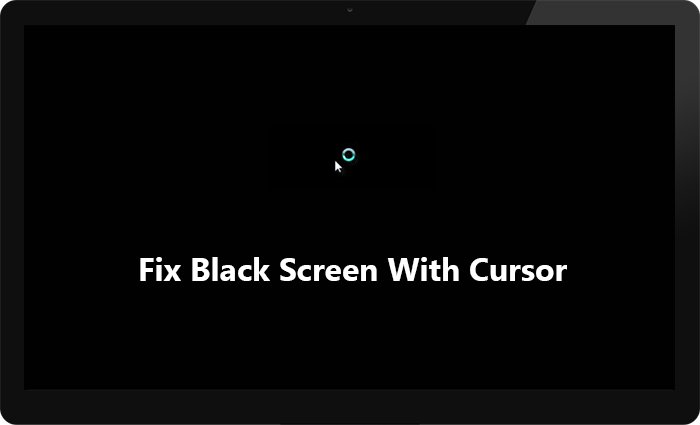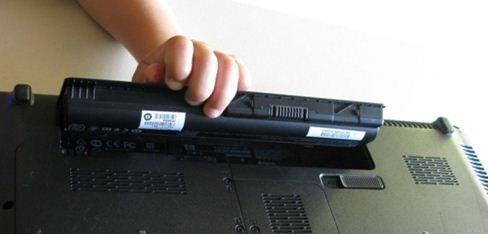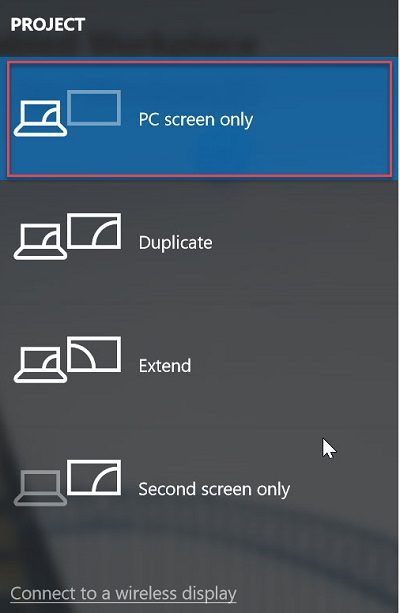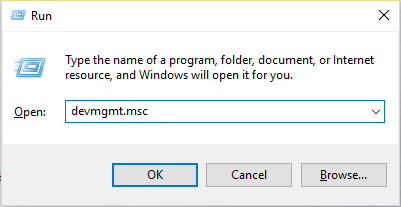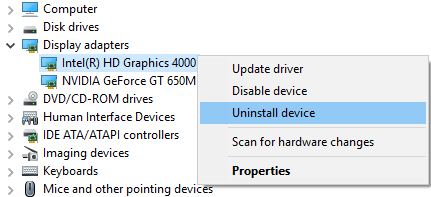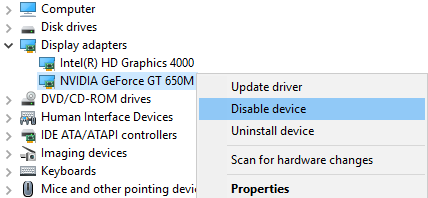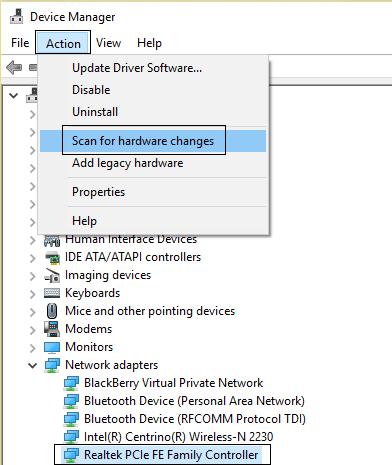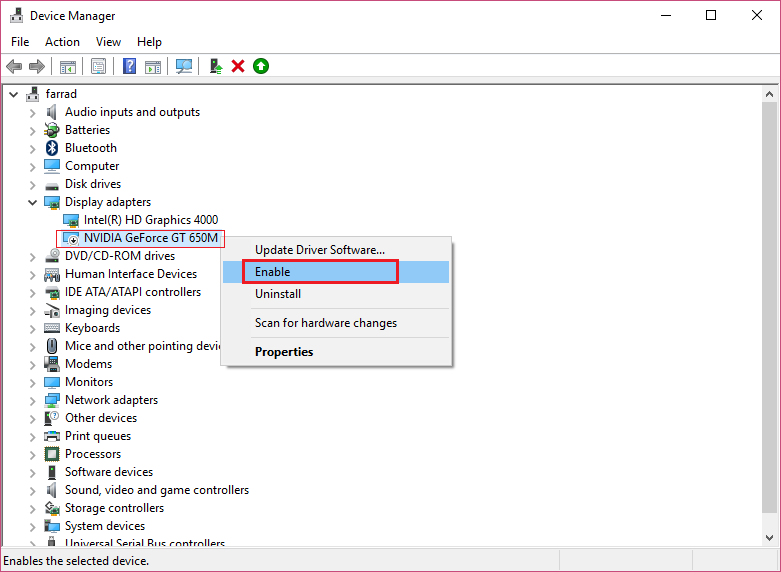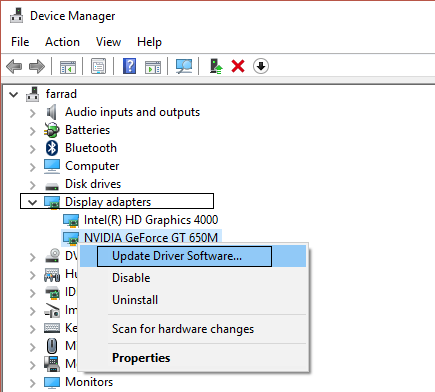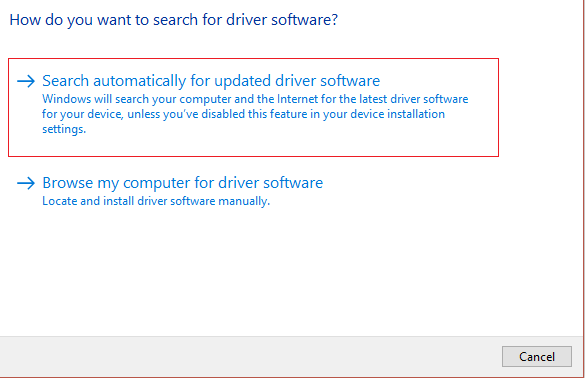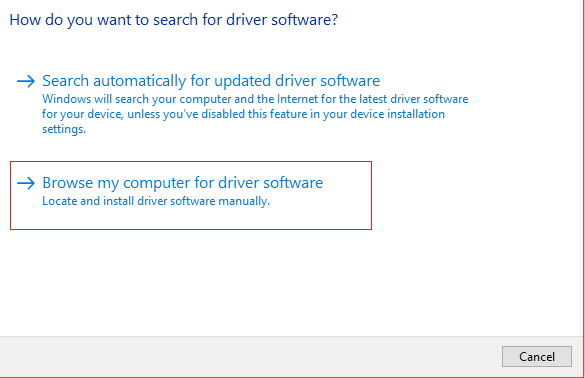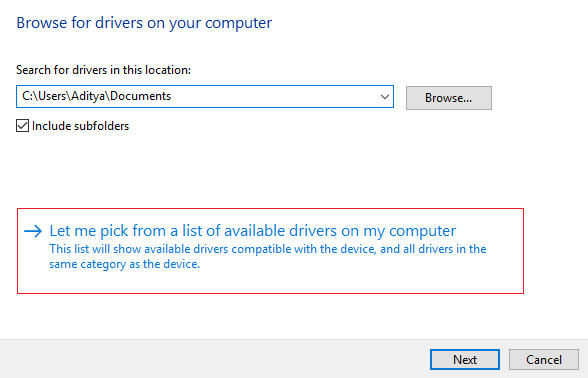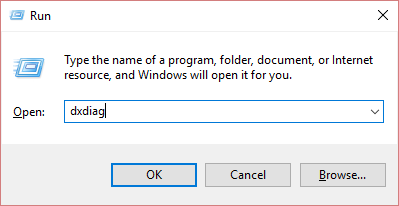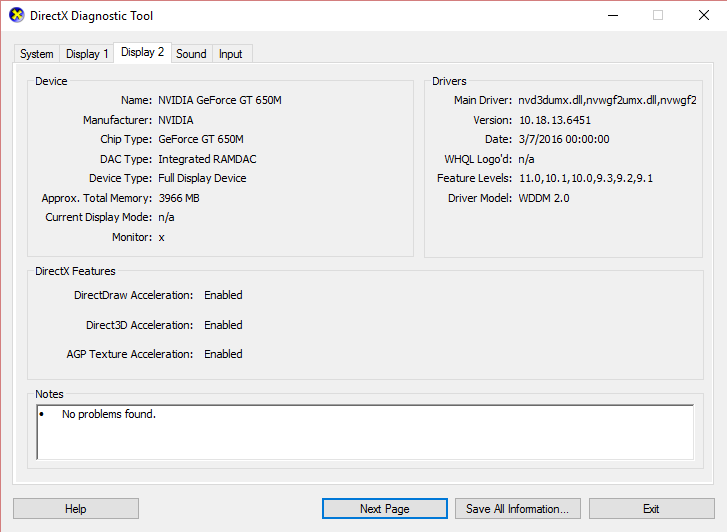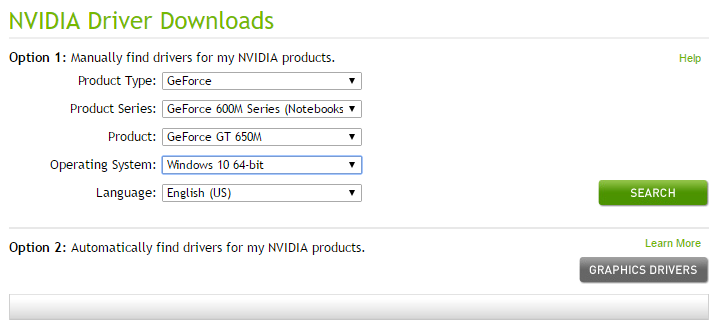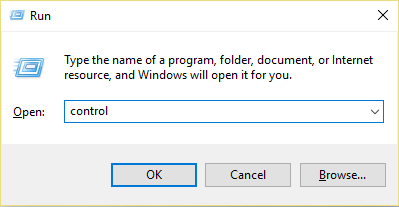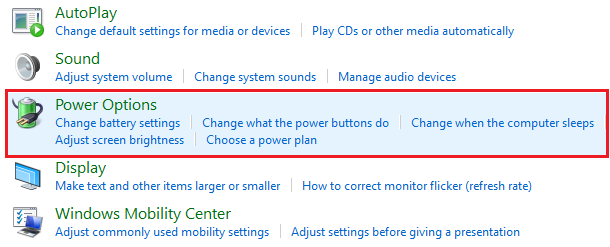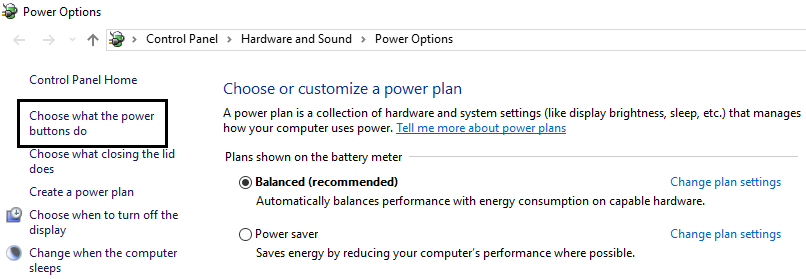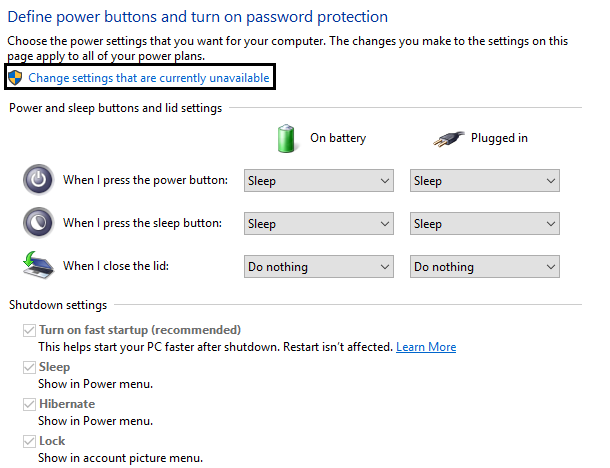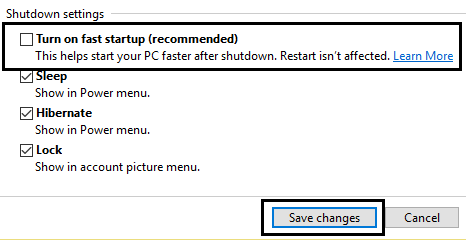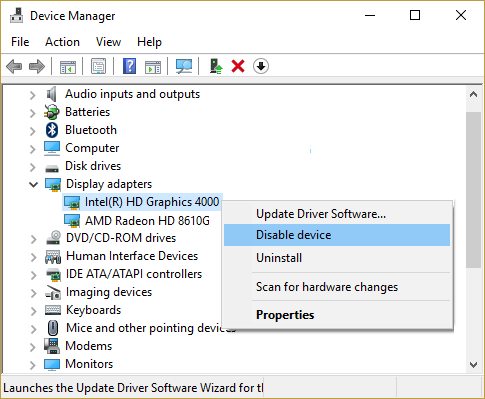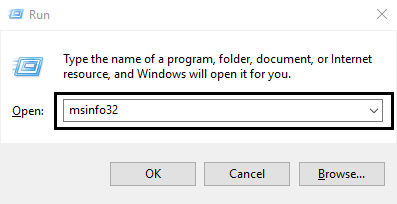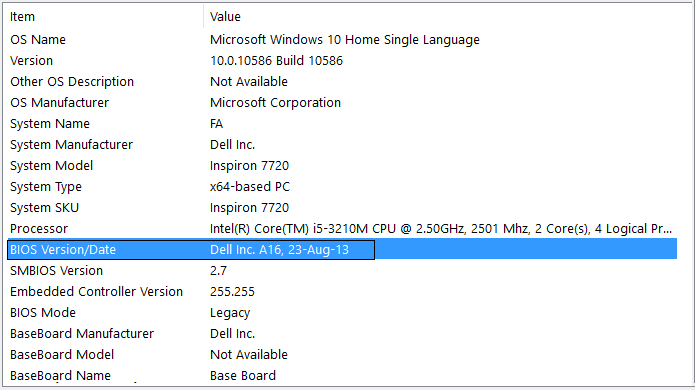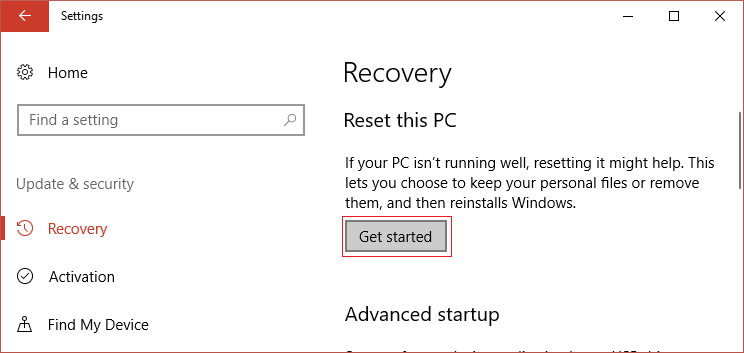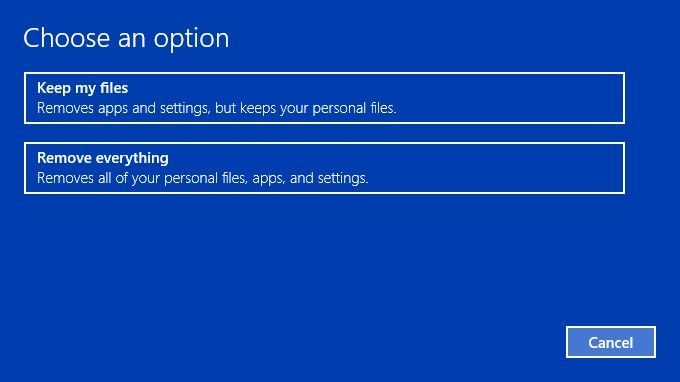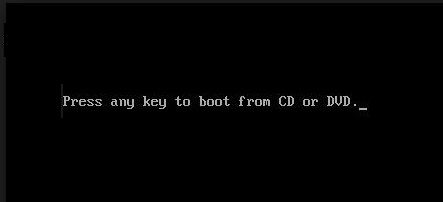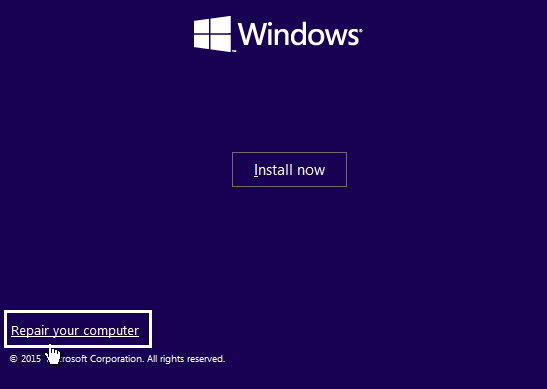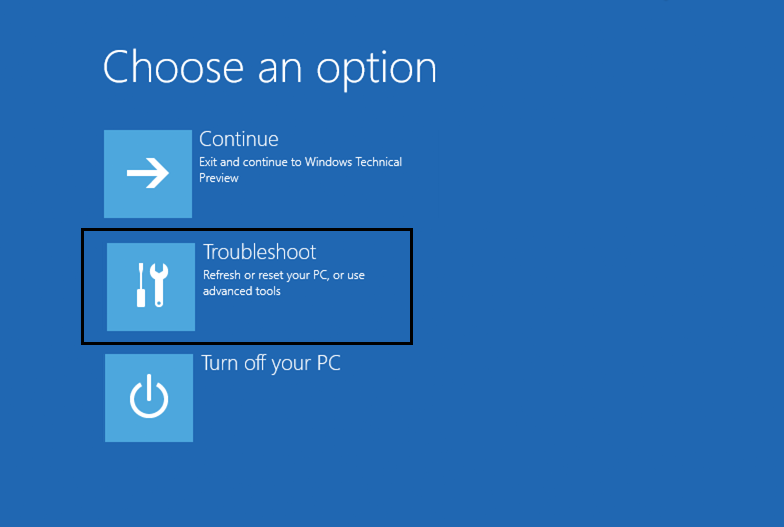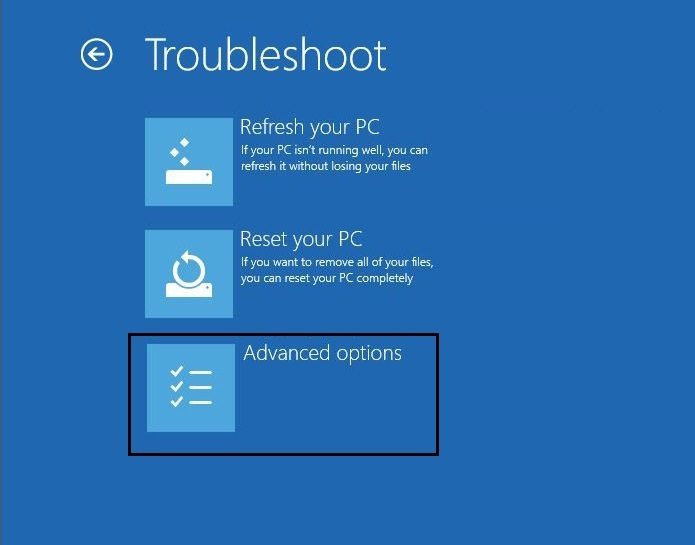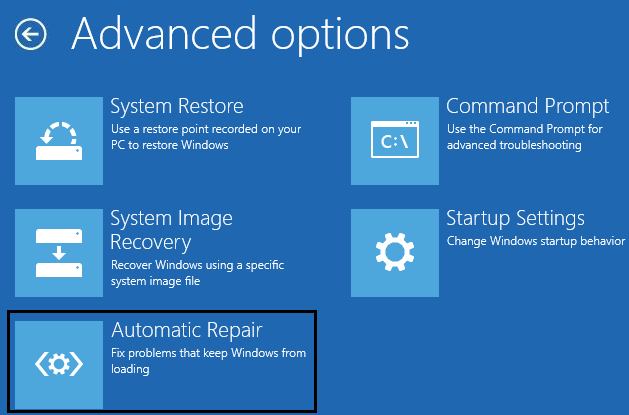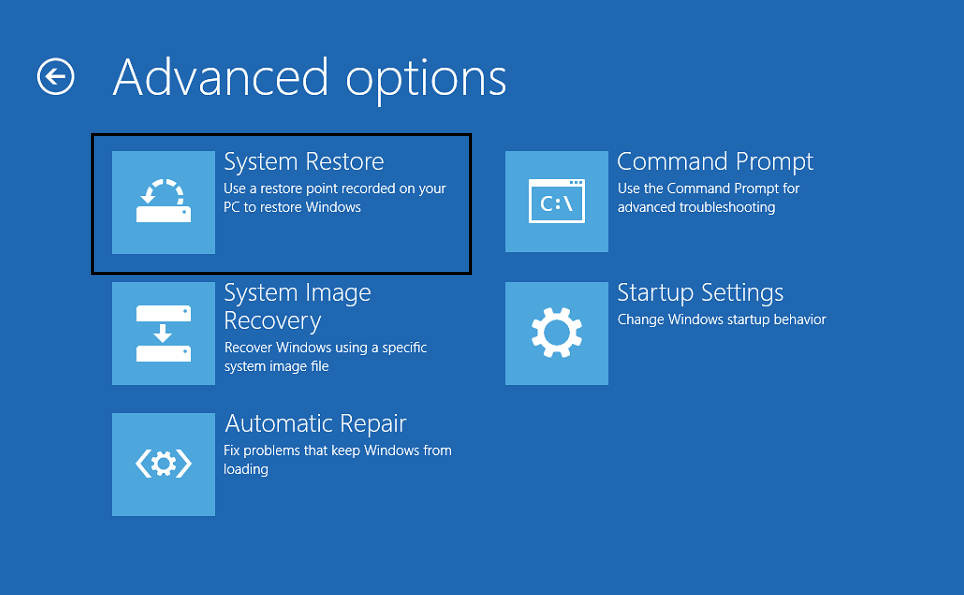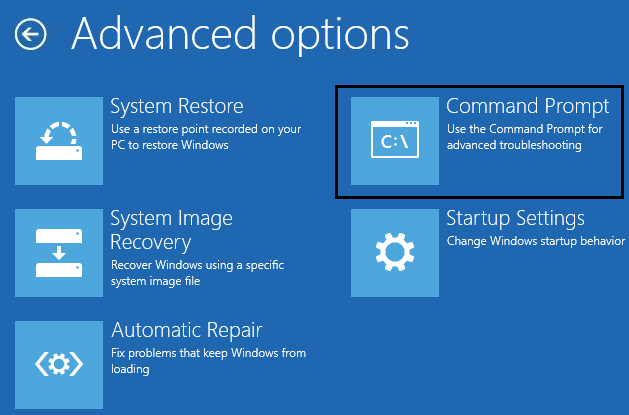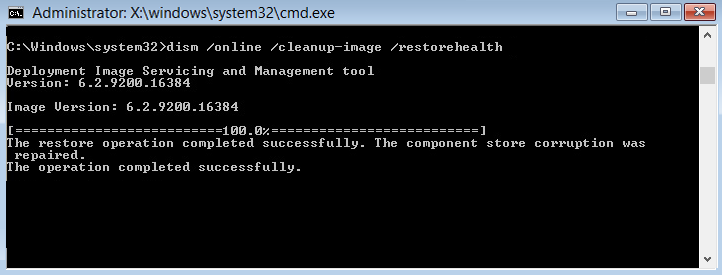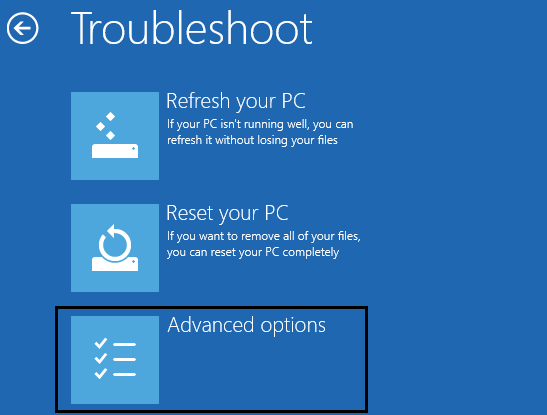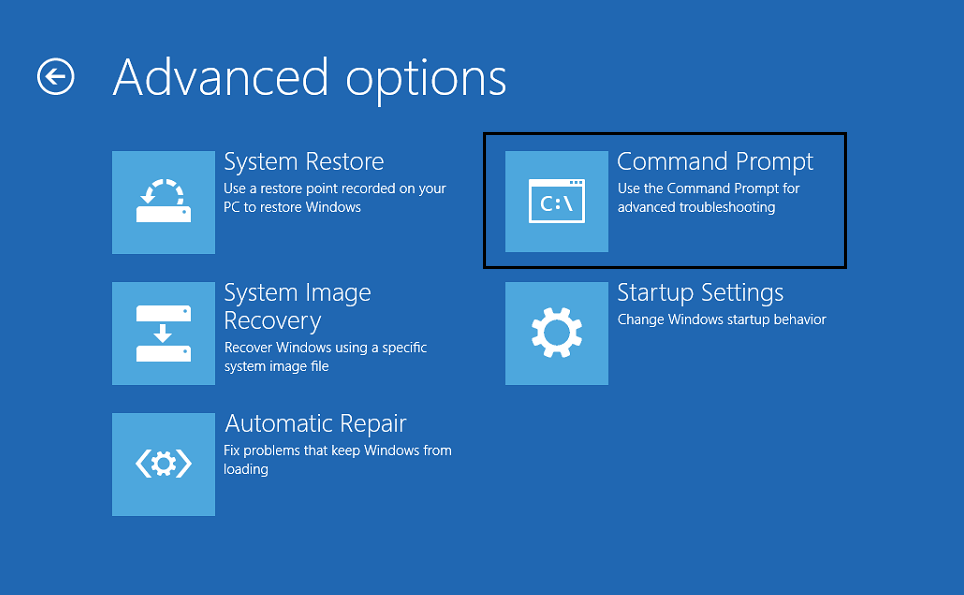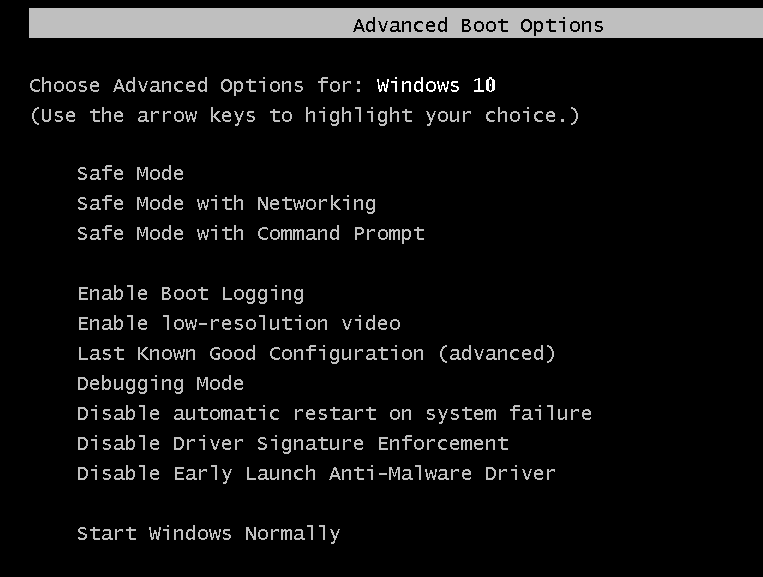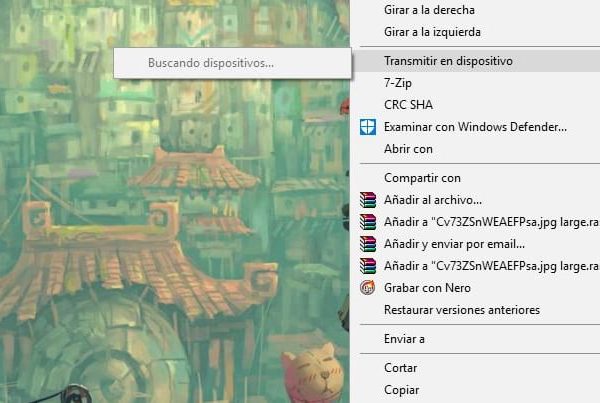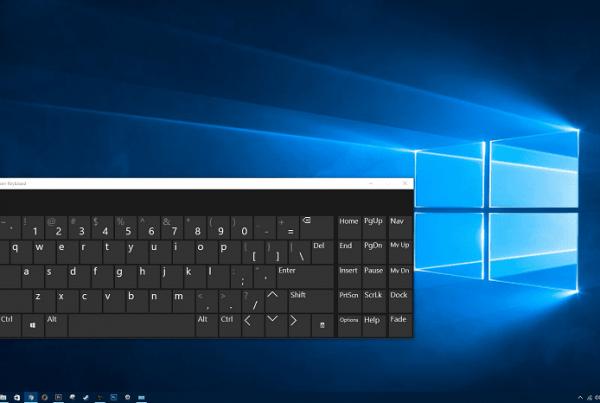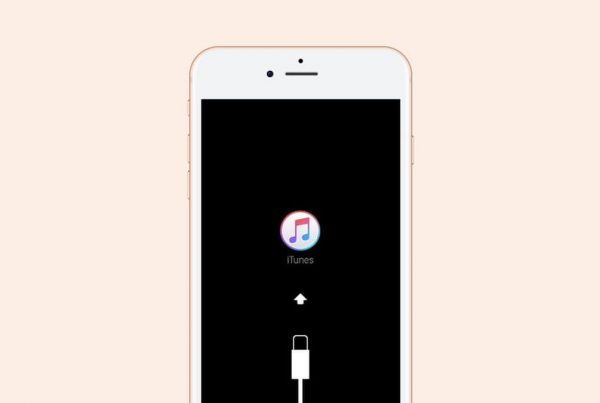Fix Windows 10 Black Screen With Cursor: If you are facing this issue where your laptop or PC screen suddenly goes black after startup and you can't get to the login screen, don't worry , today we will see how to solve this problem. When you start your PC, it normally boots up and you see the Windows 10 login screen, but in this case, you will see the BIOS screen with the Windows logo, but after that, all you will see is a black screen with the mouse cursor.
The left or right mouse click does not work on the black screen, you can only drag the mouse pointer on the black screen that does not have much use. The keyboard is also unresponsive on the black screen, pressing Ctrl + Alt + Del or Ctrl + Shift + Esc does nothing, basically nothing works and you get stuck on the black screen. The only thing you can do is force shutdown your PC and turn it off.
There is no particular cause for this problem as it can be caused by corrupt, incompatible or outdated display drivers, corrupted Windows or system files, battery waste, etc. If you try to boot into safe mode, you will get stuck at the file upload screen again and see the black screen again with your mouse cursor. Anyway, without wasting any time let's see how to fix Windows 10 black screen with cursor with the help of below troubleshooting guide.
Fix Windows 10 black screen with cursor
Make sure to create a restore point in case something goes wrong.
If you can access Windows, try these steps:
To access Windows, you will need to restart your computer in Safe Mode with Network and then follow the methods below.
Method 1: Reset Your Laptop Power
The first thing you should try is to remove the battery from the laptop and then unplug all other USB accessories, power cord, etc. Once done, press and hold the power button for 15 seconds and then reinsert the battery and try to charge it again, to see if you are able to fix Windows 10 black screen with the cursor.
Method 2: Change Displays
1.Press Windows key + P to open the project menu.
2.Because of the black screen, you won't be able to see the project menu, don't worry, it's perfectly normal.
3.You need to press the up or down arrow key a few times and hit Enter.
4.If you don't see the screen and you're still stuck on the black screen, you may have to repeat the above steps several times.
Note: If your Windows account is protected by a password, you will have to press the space bar, enter your password, and press Enter. Once this is done, only you will be able to follow the steps above. This can be tricky because you'll be doing it on a black screen, so you may have to try a few times before being successful.
Method 3: Uninstall the graphics card drivers
1.In Safe Mode, press Windows Key + R, then type devmgmt.msc and hit enter to open Device Manager.
2. Expand the display adapter and then right-click on your built-in display adapter and select uninstall.
Now if you have a dedicated graphics card, right click on it and select Disable.
4.Now, in the Device Manager menu, click Action and then Browse for hardware changes.
5.Restart your PC and see if you are able to fix Windows 10 black screen with cursor.
Method 4: Update your graphics card drivers
Manually update graphics drivers using Device Manager
1.Press Windows key + R, then type devmgmt.msc and hit enter to open Device Manager.
2.Next, expand Display Adapters and right-click on your graphics card and select Enable.
3.Once you have done this again, right click on your graphics card and select "Update Driver".
4.Select "Search automatically for updated driver software" and let the process finish.
5. If the previous steps were helpful in solving the problem, then fine, if not, then continue.
6. Again, right click on your graphics card and select "Update driver", but this time on the next screen select "Browse my computer for driver software".
7.Now select "Let me choose from a list of drivers available on my computer".
8.Finally, select the last driver in the list and click Next.
9.Let the above process finish and restart your PC to save the changes.
Follow the same steps for the integrated graphics card (which in this case is Intel) to update its drivers. See if you are able to fix Windows 10 black screen with cursor, if not then proceed to next step.
Automatically update graphics drivers from the manufacturer's website
1.Press Windows key + R and in the dialog box type "dxdiag" and press enter.
2.After that display tab search (there will be two display tabs, one for the integrated graphics card and one for Nvidia's), click on the display tab and find your graphics card.
3.Now go to the Nvidia driver download web page and enter the details of the product we just discovered.
4.Search for your drivers after entering the information, click OK and download the drivers.
5.After a successful download, install the driver and you have successfully updated your Nvidia drivers manually.
Method 5: disable fast startup
1.Press Windows key + R, then type control and press Enter to open Control Panel.
2.Click Hardware and Sound and then Power Options.
3.Then, in the left pane of the window, select "Choose what the power buttons do."
4.Now click "Change settings that are currently unavailable".
5. Uncheck "Enable Quick Start" and click "Save Changes".
After restarting see if you can fix Windows 10 black screen with cursor problem, if not then proceed to next method.
Method 6: Disable the integrated graphics card
1.Press Windows Key + R, then type devmgmt.msc and hit Enter to open Device Manager.
2. Expand Display Adapters and then right-click Intel HD Graphics and select Disable.
3.Restart your PC to save the changes and see if it is able to fix Windows 10 black screen with cursor problem.
Method 7: Activate the built-in Windows administrator account
The built-in administrator account is inactive by default and has full and unrestricted access to the PC. The built-in administrator account is a local account and the main difference between this account and the user's administrator account is that the built-in administrator account does not receive UAC prompts while the other does. The user's administrator account is a non-elevated administrator account while the built-in administrator account is an elevated administrator account. So without wasting time let's see how to activate the built-in administrator account.
Method 8: Update your BIOS
Performing a BIOS update is a critical task and if something goes wrong it can seriously damage your system, therefore expert supervision is recommended.
1.The first step is to identify your BIOS version, to do this press Windows key + R, then type "msinfo32" (without quotes) and press enter to open System Information.
2.Once the System Information window opens, locate the BIOS Version / Date and note the manufacturer and BIOS version.
Then go to the manufacturer's website, for example in my case it's Dell, so I'll go to the Dell website and then enter my computer's serial number or click the auto-detect option .
4.Now from the list of drivers shown I will click on BIOS and download the recommended update.
Note: Do not turn off the computer or disconnect from the power source while updating the BIOS, as it may damage the computer. During the update, your computer will restart and you will briefly see a black screen.
5.Once the file is downloaded, just double-click the Exe file to run it.
6.Finally, you have updated your BIOS and this can also fix Windows 10 black screen with cursor.
Method 8: Restart your PC
Note: If you cannot access your PC, restart the PC several times until you start the automatic repair. Then navigate to Troubleshooting> Reset this PC> Delete everything.
1.Press Windows key + I to open Settings and then click the Update & Security icon.
2.In the menu on the left select Recovery.
3.In Restart this PC, click the "Start" button.
4.Select the option to Keep my files.
5.For the next step, you may be asked to insert the Windows 10 installation media.
After the reset or reference, check whether the Windows 10 cursor black screen issue has been resolved or not.
Method 9: Repair Install Windows 10
This method is the last resort because if nothing works then this method will surely repair all your PC problems. Repair Install only uses an in-place update to repair problems with the system without erasing user data present on the system. So follow this article to see How to repair Windows 10 installation easily.
If you are unable to access Windows, follow these steps:
Method 1: Run Automatic Boot / Repair
1.Insert the Windows 10 bootable installation DVD and restart your PC.
2.When you are prompted to press any key to boot from a CD or DVD, press any key to continue.
3.Select your language preferences and click Next. 4. Click Repair your computer at the bottom left.
4.On the option selection screen, click Troubleshooting.
5.On the troubleshooting screen, click the Advanced option.
6.On the advanced options screen, click Automatic Repair or Startup Repair.
7. Wait for the Windows autostart repairs to complete.
8.Restart and you have successfully fixed Windows 10 black screen with cursor problem.
Also, read How To Fix Automatic Repair Couldn't Repair Your PC.
Method 2: Run System Restore
1.Put to Windows installation media or system repair disc / recovery drive and select your language preferences, and click Next
2. Click Repair your computer at the bottom.
Now choose Troubleshooting and then Advanced Options.
4… Finally, click on "System Restore" and follow the instructions on the screen to complete the restoration.
5.Restart your PC to save the changes.
Method 3: Run the SFC and CHKDSK
1.Using the above method, open the command prompt using the Windows installation disc.
2. Type the following command in cmd and hit enter after each one:
sfc / scannow / offbootdir = c: / offwindir = c: Nwindows chkdsk C: / F / R / X
Note: Make sure to use the letter of the drive where Windows is currently installed. Also in the above command C: is the drive on which we want to run the check disk, / f represents a flag that chkdsk gives permission to correct any errors associated with the drive, / r lets chkdsk search for bad sectors and perform recovery y / x instructs the check disk to unmount the drive before starting the process.
3. Exit the command prompt and restart your PC. This should fix Windows 10 black screen with cursor problem, but if it is still stuck then proceed to the next method.
Method 4: Run DISM
1.Open the Command Prompt again using the previous method and enter the following command:
DISM / Online / Clean-Image / Restore-Health
2.Press enter to run the above command and wait for the process to complete, normally it takes 15-20 minutes.
NOTE: If the above command doesn't work, then try the following: Desm / Image: C: Noffline / Clean-Image / RestoreHealth / Source: c: N-mounting windows Desm / Online / Clean-Image / RestoreHealth / Source : c: | mount windows / LimitAccess
3.After the process is complete, restart your PC.
Method 5: Enable Low Resolution Video
Make sure to remove all external accessories first, then remove any CDs or DVDs from the PC and then reboot.
2.Hold down the F8 key to bring up the advanced boot options screen. For Windows 10 you need to follow this guide.
3.Restart your Windows 10.
4.As the system reboots enter BIOS setup and configure your PC to boot from CD / DVD.
5.Insert the Windows 10 bootable installation DVD and restart your PC.
6.When you are prompted to press any key to boot from a CD or DVD, press any key to continue.
7.Select your language preferences and click Next. 8. Click Repair your computer at the bottom left.
8.On the option selection screen, click Troubleshooting.
9.On the troubleshooting screen, click the Advanced option.
10.On the advanced options screen, click Command Prompt.
11. When the command (CMD) open the type C: and press enter.
12.Now type the following command:
BCDEDIT / SET {DEFECT} LEGACY OF THE BOOTMENUPOLICÍA POLICY
13.And hit enter to activate Legacy's advanced boot menu.
14.Close the Command Prompt and go back to the Choose an option screen, click continue to restart Windows 10.
15.Finally, don't forget to eject the Windows 10 installation DVD, to get the boot options.
16. On the Advanced Boot Options screen, use the arrow keys to highlight Enable Low Resolution Video (640 × 480), and then press Enter.
If the problems do not appear in low resolution mode, then the problem is related to the video / display drivers. You can fix Windows 10 cursor black screen problem simply by downloading the display card driver from the manufacturer's website and installing it in safe mode.
That's it, you have successfully fixed Windows 10 black screen with cursor issue, but if you still have any doubts regarding this tutorial, feel free to ask in the comment section.

